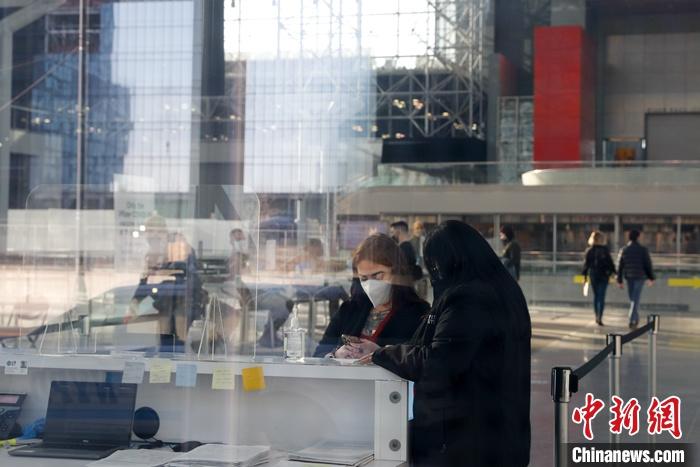(Financial World) What impact will the US$1.9 trillion epidemic relief bill bring?
China News Service, Beijing, March 12 (Liu Liang) On the 11th local time, US President Biden signed a $1.9 trillion COVID-19 relief bill at the White House.
What kind of impact will this nearly $2 trillion economic stimulus have?
Recently, the outside world has also been full of many discussions.
The relatively optimistic group believes that the funds can effectively alleviate the US employment environment and related industries that have been traumatized by the epidemic in the short term.
Barclays economist Jonathan Millar estimates that Biden's "blueprint" will drive the US economy to grow by 6.5% this year, while the US economy without this plan may grow by only 4%.
On March 9, local time, people registered for the new crown vaccine at the Javits Center.
The relatively cautious faction emphasized that money should be spent on a knife's edge, because only by addressing problems can increasing the fiscal deficit make sense.
Douglas Holtz-Eakin, former director of the U.S. Congressional Budget Office, pointed out that unlike the economic crisis that occurred in 2008, the recession of the U.S. economy this time is mainly reflected in the collapse of household service expenditures.
In this regard, he believes that the funds for the control of the epidemic in the rescue plan will help boost consumer spending, but he also said that the scale of the rescue may exceed the actual needs of the US economy.
At present, stimulating consumer spending is also one of the goals of this fund.
However, it is questionable how much of the money sent to the people will eventually enter the consumer market.
Take the US$2 trillion stimulus package passed in March last year as an example. US politicians believe that its role in promoting economic growth is limited because consumers not only save income subsidies, but also save more other income. .
Statistics show that in April last year, the proportion of personal savings of US residents as a percentage of personal disposable income even surged to a record 33%.
Similarly, in this round of rescue plans, how much money will be spent is far from certain.
Many analysts reminded that the US economy is recovering, and large-scale stimulus measures may not only trigger its own inflation risk, but also bring "imported inflation" to many developing economies.
After all, if you take into account the US$900 billion aid plan passed by the US in December last year, the US has already increased its fiscal stimulus by US$2.8 trillion in a short time.
Analysts pointed out that given the U.S. dollar’s status as an international reserve currency, part of the U.S.’s expanding fiscal deficit will inevitably be borne by other countries in disguise, and it will also put pressure on the U.S. dollar’s sharp depreciation.
Regardless of whether it is the transfer of fiscal deficits or the output of currency devaluation pressure, developing countries are always the ones who are injured.
Li Yang, a member of the Chinese Academy of Social Sciences, previously analyzed and pointed out that the large debt expansion of developed economies has led to non-reserve currency issuers, especially developing countries that suffer from both the flood of liquidity and the violent fluctuations in the exchange rate of their currencies.
According to data from the US Treasury Department, as of March this year, US debt has exceeded 28 trillion US dollars, accounting for about 10% of global debt.
Affected by the proliferation of the U.S. dollar and risk aversion in the market, the currencies of emerging market countries around the world have suffered drastically since last year.
Standard & Poor's Global Ratings pointed out that this round of stimulus measures may fuel inflation expectations, push up U.S. Treasury yields, and have an impact on capital flows in emerging markets in the future.
Recently, data released by the International Finance Association (IIF) showed that as the 10-year U.S. Treasury yield continues to rise, international funds in emerging markets have seen their first net outflow since October last year.
IIF said that the rise in U.S. bond yields has invisibly amplified the sentiment of "shrinking panic", which may not be conducive to the inflow of funds from emerging markets in the future.
The net outflows of international funds in the stock and bond markets of emerging markets in the past two weeks have somewhat revealed investors' concerns.
Former U.S. Treasury Secretary Connery once said: "The U.S. dollar is our currency, but it is your problem." How to better deal with the potential economic risks brought about by the growing economic stimulus in the United States is undoubtedly an urgent need for countries to think about. The problem.
(Finish)

